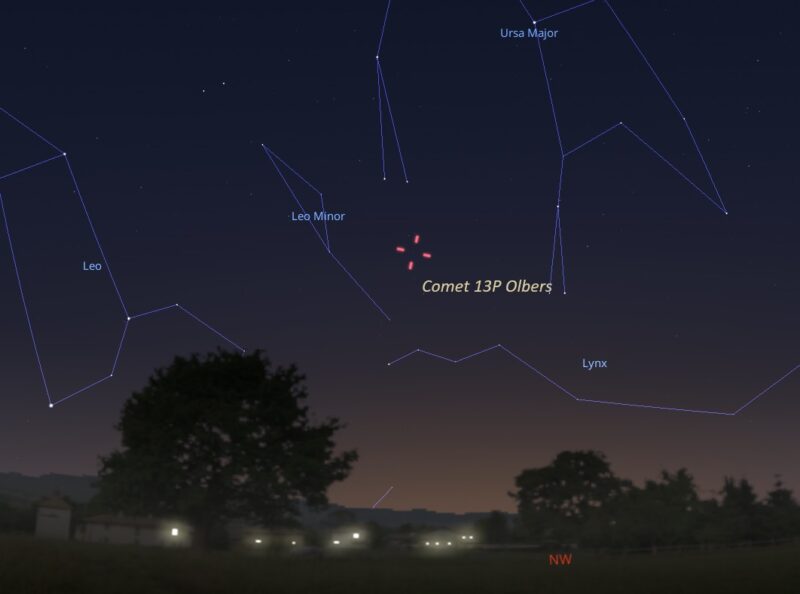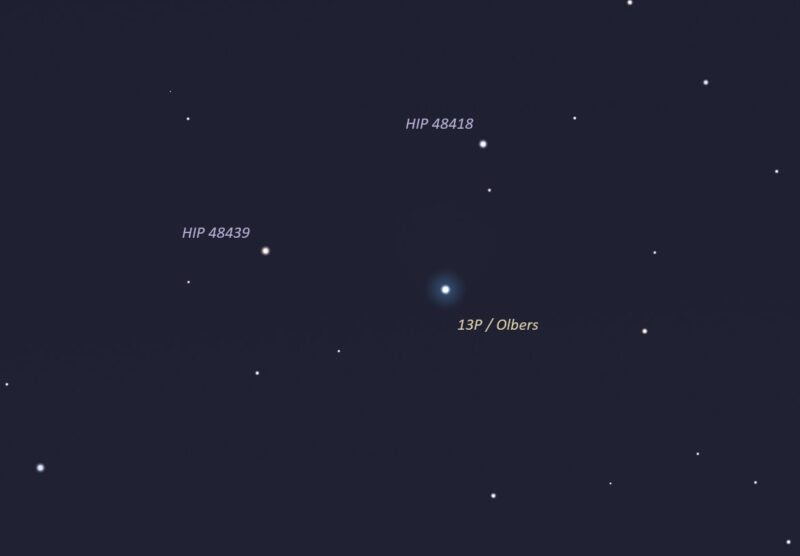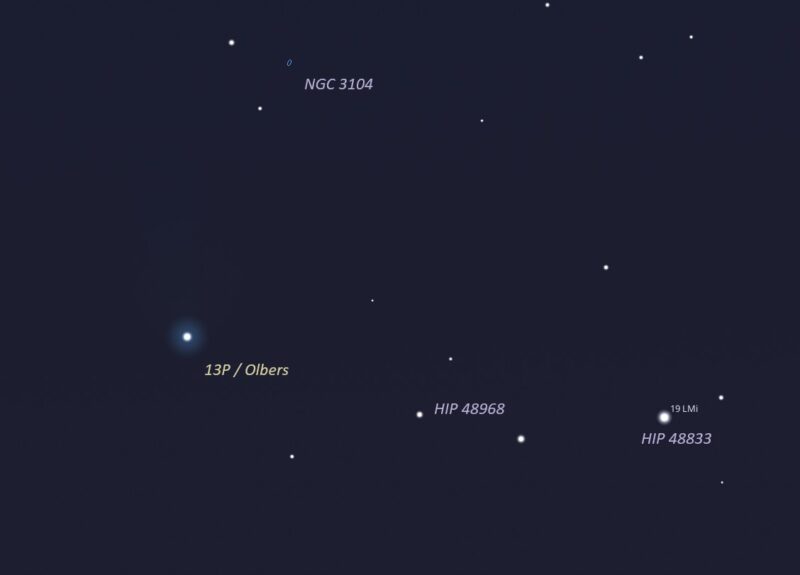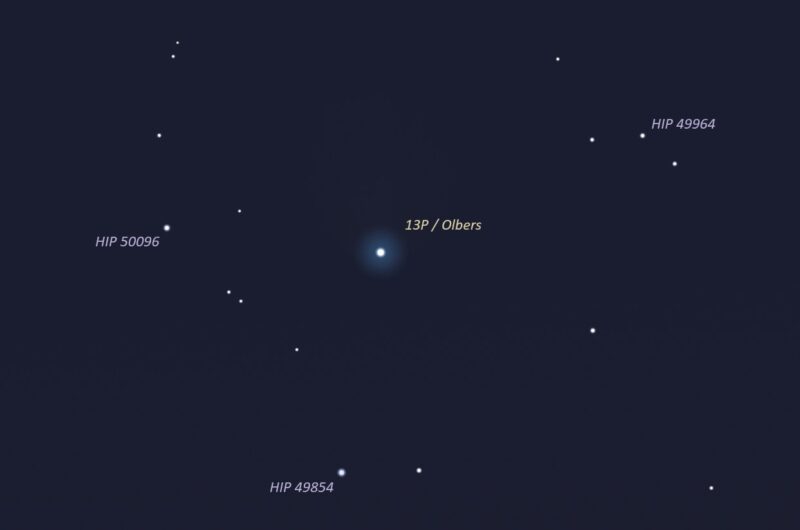Comet 13P/Olbers approaches Earth
Comet 13P/Olbers is returning to the inner solar system after 68 years. And you can currently see it in binoculars! The periodic comet made its perihelion – or closest approach to the sun – on June 30. Comet 13P/Olbers will be closest to Earth on Saturday, July 20. It’s currently in Ursa Major but moving quickly toward Leo Minor, in the northwestern sky.
During closest approach, the comet will be passing at 176 million miles (283.5 million km) from our planet. Even at that distance, Comet 13P/Olbers is currently the brightest comet in our skies. The celestial visitor orbits the sun every 68 years (67.9 to be exact), according to NASA/JPL. Since it returns and has an orbit of less than 200 years, it receives the classification of a periodic, or “Halley-type,” comet.
It’s currently approaching the inner solar system at a speed of 83,802 miles per hour (134,867 kph) relative to Earth.
Observing Comet 13P/Olbers
The best time to observe (with binoculars or a small telescope) and photograph Comet 13P/Olbers is this week. Comet 13P/Olbers has a brightness of magnitude 6.5 to 7, which means it’s not visible to the unaided eye. But it should be observable with binoculars.
Observers with binoculars or a small telescope in the Northern Hemisphere will have the best chance of seeing the comet. Meanwhile, observers using optical aid close to the equator might be able to spot it very low on the horizon just after sunset.
On July 16, just after sunset, Comet 13P/Olbers will pass close to NGC 3104, an irregular galaxy in Leo Minor. It’s a great opportunity for astrophotographers.
During closest approach on July 20, 2024, the celestial visitor will pass close to galaxy NGC 3219 on the dome of our sky. Thus, the distant galaxy will be a convenient reference to point a computerized or “Go To” telescope.

Finder maps







The comet’s discovery
Heinrich Olbers discovered the comet that now bears his name on March 6, 1815, from Bremen, Germany. At that time, it was faintly visible to the unaided eye.
The comet’s last visit to the inner solar system was in 1956. And after passing by Earth in 2024, we won’t see it again until March 2094. So take a good look at the charts, and try to spot it now.
Bottom line: Comet 13P/Olbers is making its closest approach to Earth on July 20, 2024. Want to see it for yourself? Check out the finder maps here.
Read more: Observable comets in 2024, from Guy Ottewell